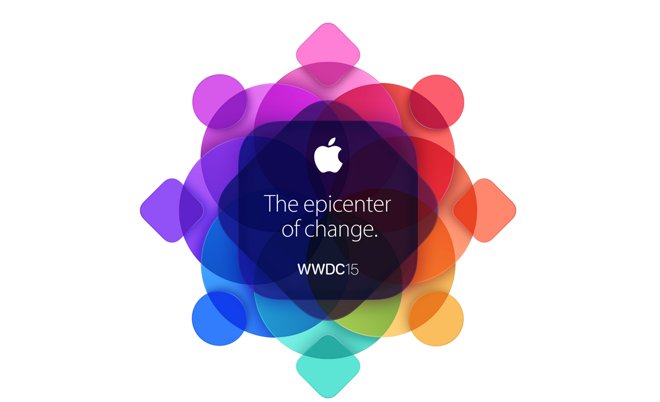
Happy Friday, everyone! Today we have a short blast of Apple news for your listening pleasure:
- Apple begins sending out notifications to the winners of 350 WWDC scholarships
- Xcode 6.3.2 GM seed has been shipped to developers
- Patently Apple: more Watches will be sold in the first 60 days than iPhones sold in the first year
- A “smart cane” for the blind is developed by students from Birmingham City University
The full text version of the podcast script is available below.

Like the Apple logo of the past, today’s Apple news update is a rainbow of contrasts!
- Apple tops the Greenpeace Clean Energy Index with a perfect score
- Google News & Weather now has an Apple Watch companion app
- Smugglers trying to bring Apple products into Argentina illegally had those goods confiscated recently
- Apple CEO Tim Cook meets with Chinese Vice Premier Liu Yandong in Beijing
- OtoSense iOS app listens for doorbells, phones and timers for those who are deaf or hard of hearing
The full text of the podcast script is listed below.

A new universal iOS app from Creaceed is about to change the way that you take notes with digital devices — it has certainly changed my notetaking methods. Carbo (US$7.99, launch price of $3.99) is advertised as “handwriting in the digital age”, and that describes in a nutshell what the app accomplishes.
Carbo starts with a handwritten note. It doesn’t matter if it was written neatly in a notebook or scrawled on a napkin; all you need is a note. Next, you take a photo of that note and adjust the contrast. The app uses what Creaceed calls a “hybrid capture and rendering method, halfway between bitmap and vector” to visualize the note on any iOS display.
The file size captured is much smaller than what you’d see with a JPEG. A full-page note uses about 400KB of storage as opposed to 2.5MB for a full JPEG, so Carbo is quite efficient in storing the images.
Once the image is in Carbo’s format, you can edit your notes. Did you doodle a picture of a cat on the page of some important business notes? No problem; there’s an eraser tool. Want to move sections of an outline around to a new order? Just select an element with a lasso by running your finger around it, and you can then drag that element anywhere, scale it, rotate it, or even remove it. There’s even a way of “bold-facing” your handwritten text by making the lines of something you’ve lassoed thicker.
Organization of your notes is chronological based on when they were imported. There is, however, a tagging system built into Carbo that you can use for searching the notes, as well as a text description (annotation) that can be stored with the image. Storage can be local, or you can sync to iCloud, Evernote, or Dropbox.
Carbo images are stored in black and white, but you can have some fun when you export them. That black and white image can look like chalk on a green or blackboard, like a blueprint (white on blue), or like different pens were used on paper. Your exported notes can be sent to Twitter or Facebook, AirDrop’d to another Apple device, emailed, sent in Messages, stored to iCloud Drive — basically anything you can do with the standard iOS share sheet.
The Carbo UI is brilliantly simple. Any of your notes can be acted upon by just swiping it to the left. That brings up a tab that allows you to add tags, move a note to the cloud or back to your device, or delete a note. When tags are applied to your notes, the bottom of each note thumbnail reflects the color or colors that are assigned to the tags.
Other elements include a pencil button to bring up the editing tools and a palette button to show the sharing styles. A “funnel” button brings up a sidebar that filters notebooks and tags, and the standard “gear” button allows settings to be changed and saved. Carbo is easy to learn and master.
So, you might be asking “Why not just take your notes on the device in an app like Note Taker HD, Notability, and so on?” If you’re like me, you have probably tried taking notes with apps that say they’re “just like a notebook”. Well, even the best of the note-taking apps with the most impressive palm rejection algorithm usually doesn’t let me take notes the way I do with regular old pen and paper — which explains why I have refused to take handwritten notes on an iPad or iPhone.
I’m happy to say that I’m now breaking out the old spiral bound paper notebooks that I built my business on and using them again for notetaking. I can take my handwritten notes faster on paper than on my iPad, edit them later, and store them in the cloud for future reference. Who knows? This may be the way that AWT editor Dave Caolo can move all of those Field Note and Moleskine notebooks into the 21st Century!
If you’re like me and have just never gotten used to using your finger or a stylus to take handwritten notes on your iPad or iPhone, you’re going to love Carbo.
